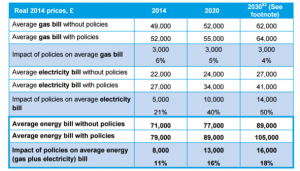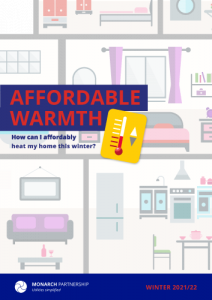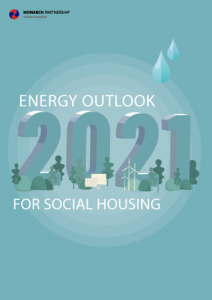What are third party charges?
Third Party Charges (TPCs), also known as non-commodity costs, are the charges on a utility bill which do not come directly from the use of energy. The charges, for instance, may be network charges for the transmission and distribution of energy, or policy charges which are put in place to fund renewable energy incentives by the Government. Often, the non-commodity charges also pay for the replacement of ageing infrastructures. TPCs typically make up around 60% of the average energy bill, but these are costs faced by gas and electricity suppliers which are outside of their control. Costs of government policies and network charges have both increased in recent years which, in turn, have filtered through to TPCs – leaving the consumers to make up for the extra costs.
Policy charges:
A large proportion of TPCs come as a result of policy charges introduced by the Government. The charges are as follows –
• Renewables Obligation (RO) (electricity)
Introduced to support renewable electricity generation on a large scale in the UK. The scheme is closed to new entrants but will continue to provide funding for existing renewables projects until 2027.
• Feed-in Tariffs (FiTs) (electricity)
Introduced to support renewable electricity generation on a small scale in the UK. It was launched in 2010 and offers different incentive payment rates depending on the type of renewable technology.
• Contracts for Difference (CfD) (electricity)
Introduced to incentivise people to generate their own low-carbon energy
• Capacity Market (electricity)
Introduced to encourage investment in renewable technology and new generation projects
• Climate Change Levy (CCL) (electricity and gas)
Introduced for businesses as an incentive to increase energy efficiency and reduce carbon emissions. It is expected to rise by 45% going into 2019 (due to abolishment of the Carbon Reduction Commitment).
• Energy Company Obligation (ECO) (electricity and gas)
Introduced to allow energy suppliers to give financial support to domestic users to make homes more energy efficient
• Warm Homes Discount (WHD) (electricity and gas)
Introduced to offer a rebate on electricity bills to consumers who cannot afford it – a rebate which is funded by suppliers by charging end users more
• Distribution Use of System (DUoS) (electricity)
Includes DCP228, DCP161, P272, P350, and MEES. Read our previous article on the DCP228 update of April 2018 for more details.
What are the impacts of policy charges on SMEs?
SMEs (small and medium-sized enterprises) often feel the impact of TPCs far more than the average domestic consumer. In 2014, the impact of policy costs on the average energy bill added a cost of 11% on top of the bill already including network charges. This is predicted to rise to 16% by 2020, and 18% by 2030. It’s important to note that the 2020 estimated figures for policy charges on gas bills are a mere 5%, compared to 40% on electricity bills. This is because every single policy charge introduced by the government affects electricity suppliers, but only three in the policy list above impact gas bills.
With more funding continuously being channelled into renewable energy incentives for consumers, and more money being given to suppliers to reward their own customers, it’s clear to see that TPCs will continue to rise. The impact on SMEs, therefore, will also keep increasing, making it harder for SMEs to maintain good profit margins and to budget accordingly.

Image source: Cornwall Insight
Looking ahead…

Source of information: nPower
The data above is taken from N Power’s information on the various government energy policies and their charges. We have chosen to highlight just four policies and demonstrate the amounts by which they have increased over a three-year period. The largest increase from 2016 until 2019 comes in the form of the Renewables Obligation, suggesting that the Government are pushing for more investment in existing large-scale UK renewable projects. Examples of these are wind farms, both onshore and offshore, and large solar power plants. While the RO scheme is not accepting new entrants, funding for existing projects will extend to 2027.
The second biggest increase over the three years is within Feed-in Tariff (FiT) charges, which again supports renewable projects, this time on a smaller scale. However, the FiT charge will be scrapped come April 2019 and is unlikely to be replaced. One of the reasons for its removal from Government policy is that renewable energy solutions are becoming cheaper – for example domestic solar power systems have fallen from £12,000 in 2010 to £5,000 today – and therefore consumers now require less funding from the Government to install them.
The difference between increases in the gas and electric Climate Change Levy (CCL) charges is minimal, but both saw a rise in the amount consumers are being charged from 2016 to 2019. The Government’s decision for the CCL to remain in place, instead of being scrapped alongside FiT charges, suggests that at least some incentives will continue to be offered, encouraging people to work towards renewable energy solutions and low carbon emission goals.
Emerge from the fog of hidden costs
While the policy charges do make up a big chunk of your energy bill, it’s important to remember that they are contributing to a great cause – that of renewable energy generation. Certain policies, such as the Climate Change Levy, also work towards the EU’s Zero Carbon Emissions goal to be achieved by 2050. However, with third party charges adding an ever-increasing amount to our energy bills, it’s hard not to think about the financial impact of it all. Work with us and our Efficient Cost Management services to account for these hidden costs and start to budget more efficiently.
Useful links:
Ofgem: Bills, prices and profits
Resolve Energy: Third party & industry charges















